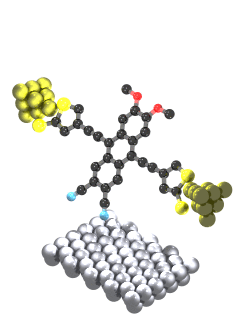Molecular Motors: Nature's Nanomachines
What are Molecular Motors?
Molecular motors are biological nanomachines that convert chemical energy into mechanical work at the molecular level. These highly efficient and specialized proteins are responsible for a wide range of essential cellular processes, including muscle contraction, cell division, and intracellular transport. Molecular motors have inspired researchers to develop artificial molecular machines and nanodevices that mimic their functions and properties.

Types of Molecular Motors
There are three main classes of molecular motors found in eukaryotic cells:
- Myosins: Myosin motors are responsible for muscle contraction and various forms of cell motility. They interact with actin filaments and use ATP hydrolysis to generate force and movement. Myosins play crucial roles in cell division, cell migration, and intracellular transport.
- Kinesins: Kinesin motors are involved in intracellular transport, particularly in the movement of organelles, vesicles, and macromolecules along microtubules. They typically move towards the plus end of microtubules and are essential for cell division, neurotransmitter release, and axonal transport in neurons.
- Dyneins: Dynein motors are responsible for retrograde transport, moving cargoes towards the minus end of microtubules. They are involved in cell division, cell motility, and the transport of organelles and vesicles. Dyneins also play a crucial role in the beating of cilia and flagella.
Structure and Mechanism of Molecular Motors
Molecular motors share a common structural organization, consisting of a motor domain, a neck region, and a tail domain. The motor domain contains the catalytic site for ATP hydrolysis and the actin or microtubule-binding site. The neck region acts as a lever arm, amplifying the small conformational changes generated by ATP hydrolysis into larger movements. The tail domain is responsible for cargo binding and regulation of motor activity.
The mechanism of molecular motors involves a cyclic interaction between the motor domain and the cytoskeletal filament (actin or microtubule). ATP hydrolysis induces conformational changes in the motor domain, leading to the stepping of the motor along the filament. This process is highly coordinated and regulated by various cofactors and signaling pathways to ensure the precise spatial and temporal control of motor activity.
Biophysical Properties of Molecular Motors
Molecular motors exhibit remarkable biophysical properties that enable them to perform their cellular functions efficiently:
- Processivity: Many molecular motors, especially kinesins and certain myosins, are highly processive, meaning they can take multiple steps along the filament without dissociating. This property allows them to transport cargoes over long distances within the cell.
- Force Generation: Molecular motors generate significant forces relative to their size. For example, myosin motors can generate forces in the piconewton range, enabling them to power muscle contraction and cell motility.
- Directionality: Molecular motors exhibit directional movement along the cytoskeletal filaments. Kinesins and myosins generally move towards the plus end of microtubules and actin filaments, respectively, while dyneins move towards the minus end of microtubules.
- Regulation: The activity of molecular motors is tightly regulated by various mechanisms, including autoinhibition, phosphorylation, and interactions with regulatory proteins. This regulation ensures that motor activity is spatially and temporally coordinated with cellular processes.
Applications and Implications
The study of molecular motors has provided fundamental insights into the workings of biological systems at the nanoscale. These insights have inspired the development of artificial molecular machines and nanodevices that mimic the functions of biological motors. Some potential applications of molecular motors and their artificial counterparts include:
- Targeted drug delivery: Molecular motors could be harnessed to transport therapeutic agents to specific cellular locations, enhancing the efficacy and specificity of drug delivery.
- Biosensing: Artificial molecular motors could be integrated into biosensing platforms to detect specific molecules or signals with high sensitivity and specificity.
- Nanoscale actuation: Molecular motors could be used to power nanoscale devices, such as nanorobots or nanomachines, for various applications in nanotechnology, medicine, materials science, and engineering.
- Biomolecular computing: The collective behavior of molecular motors could be exploited to perform complex computations and information processing tasks at the nanoscale.
Understanding the mechanisms and properties of molecular motors also has implications for human health. Defects in molecular motor function have been linked to various diseases, such as neurodegenerative disorders, cardiomyopathies, and ciliopathies. Elucidating the role of molecular motors in disease pathogenesis could lead to the development of new therapeutic strategies and interventions.
Further Reading
Chemical Reviews, Introduction: Molecular Motors
Nature, Molecular Motors
